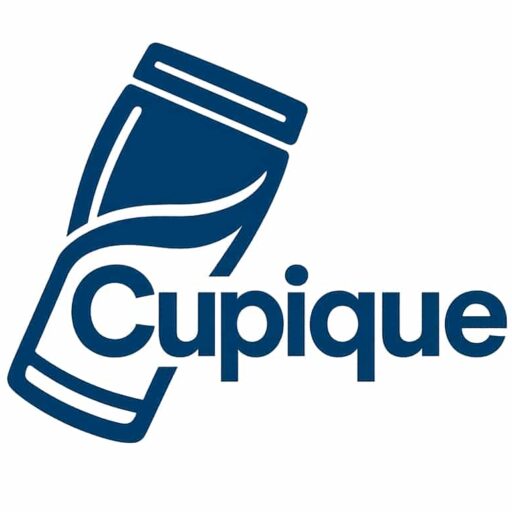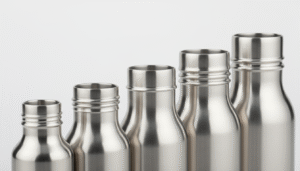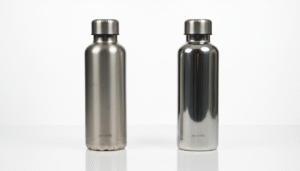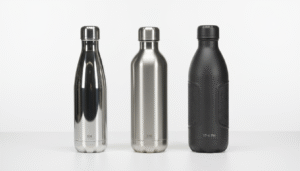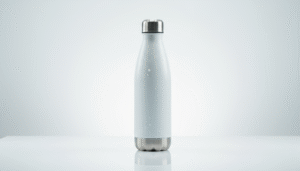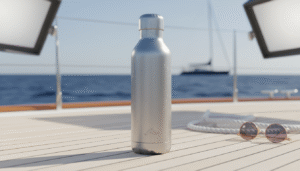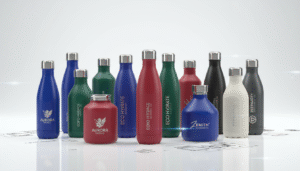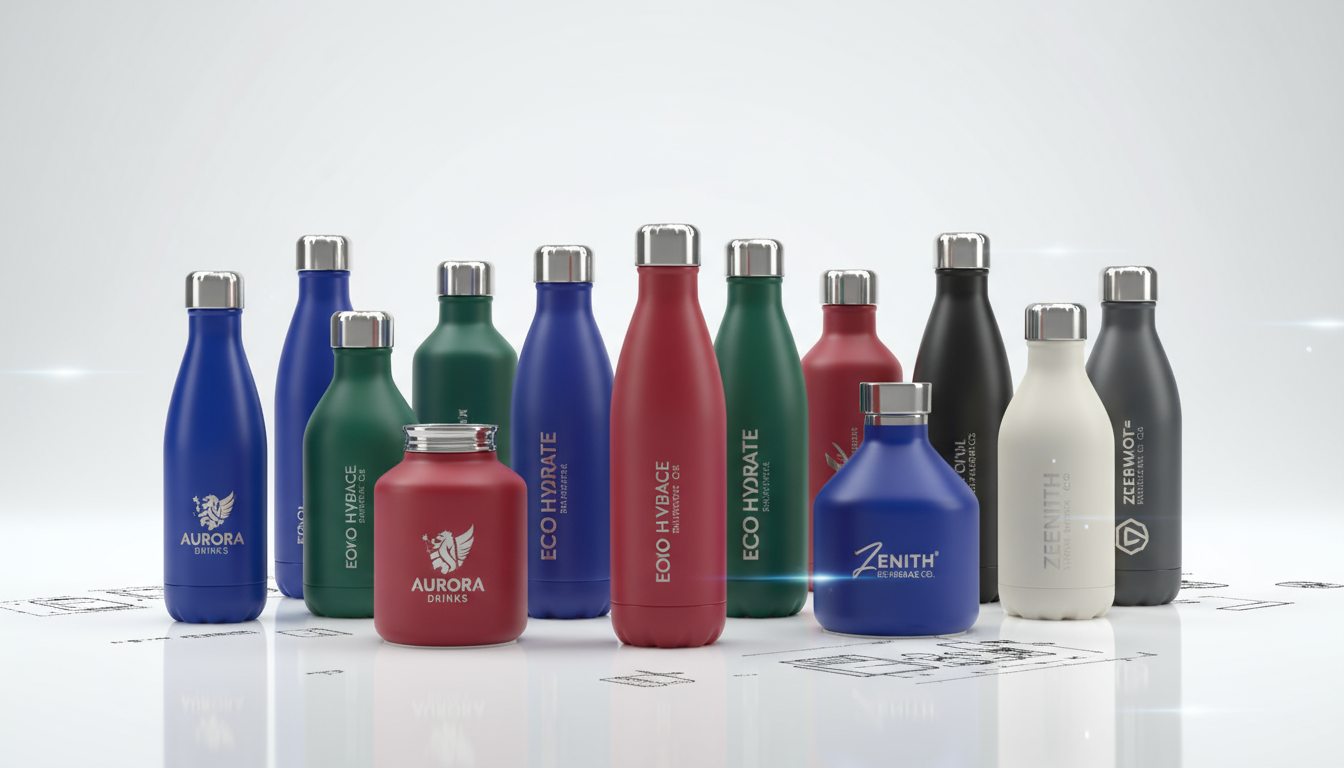
Ceramic-coated stainless steel bottles offer superior customization potential through taste purity, elevated aesthetics, and dual sustainability messaging that transforms standard promotional items into desirable branded products.
I've seen countless B2B buyers settle for basic stainless steel bottles, only to receive complaints about metallic taste or cheap appearance. The ceramic coating solution changes everything. Let me share why this upgrade matters for your next custom order.
Ceramic-coated stainless steel bottles offer superior customization potential for branding.True
The snippet states these bottles provide superior customization potential for desirable branded products.
Ceramic-coated bottles reduce customization options for promotional items.False
The text explicitly states they offer superior customization potential for branding.
Why Choose a Ceramic Lining Over a Standard Stainless Steel Bottle
Standard steel bottles often leave your brand with a bitter aftertaste - literally and figuratively.
Ceramic lining eliminates metallic taste transfer, protects acidic beverages, and creates a premium foundation that elevates your brand's perceived value and quality reputation.
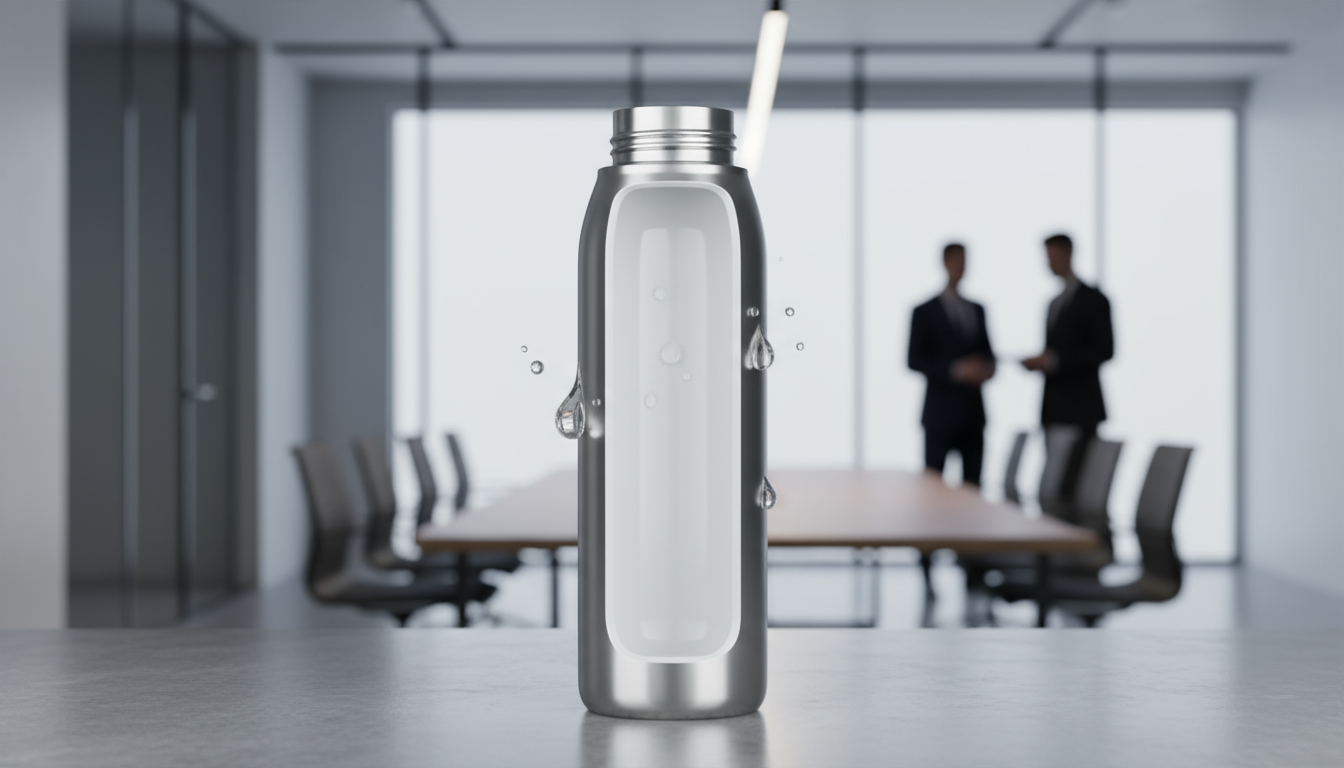
The ceramic coating acts as brand reputation insurance. When your client sips their morning coffee from your custom bottle, they taste pure coffee - not metal1. This matters more than most buyers realize.
The Business Case for Ceramic Coating
| Feature | Standard Steel | Ceramic-Coated Steel |
|---|---|---|
| Taste Purity | Metallic notes possible | 100% neutral taste |
| Acid Resistance | Limited | Excellent |
| Perceived Value | Standard | Premium |
| Customization Base | Basic | Sophisticated |
I've worked with corporate clients who switched to ceramic-coated bottles after receiving feedback about metallic taste in their previous orders. The difference is immediate. Your branded bottle becomes something people actually want to use daily, not hide in a drawer.
The ceramic surface also provides better adhesion for certain printing techniques2. This means your logos stay vibrant longer and the overall finish feels more retail-quality than promotional-cheap.
Ceramic lining prevents metallic taste transfer and protects acidic beverages.True
The text states ceramic lining eliminates metallic taste and protects acidic beverages.
Ceramic lining does not prevent metallic taste transfer in bottles.False
The text explicitly states ceramic lining *eliminates* metallic taste transfer.
Is a Ceramic-Coated Bottle a Safer Option for People with Metal Allergies
Metal allergies can turn your thoughtful corporate gift into an unusable reminder of oversight.
Ceramic coating creates a complete barrier between beverages and stainless steel, eliminating direct contact that triggers nickel or chromium sensitivities in employees and clients.
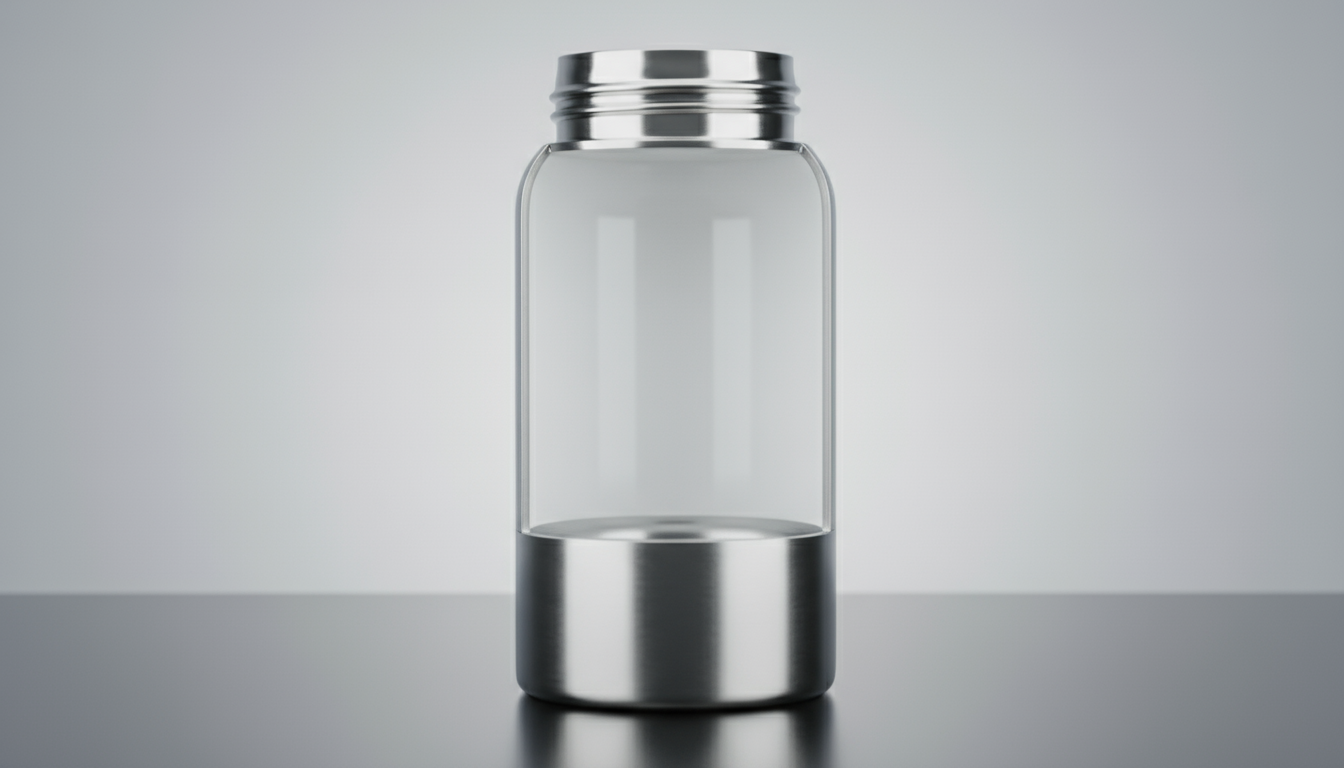
This safety advantage opens new market segments for your custom bottle programs. You can confidently target health-conscious executives, wellness companies, and industries where employee safety is paramount.
Allergy Protection Benefits
The ceramic barrier works in two ways. First, it prevents any metal ions from leaching into beverages, even during extended contact with acidic drinks3. Second, it eliminates direct skin contact with the interior surface during drinking.
| Concern | Risk Level | Ceramic Solution |
|---|---|---|
| Nickel Sensitivity | High with steel | Eliminated |
| Chromium Reactions | Moderate | Prevented |
| Acidic Drink Safety | Variable | Guaranteed |
| Long-term Use | Uncertain | Reliable |
I recommend ceramic-coated bottles for any B2B program targeting healthcare, fitness, or wellness sectors. The safety story becomes part of your brand narrative. You're not just giving a bottle - you're demonstrating attention to individual needs and health considerations.
Ceramic coating completely isolates beverages from metal, preventing allergy triggers.True
The text states ceramic coating creates a complete barrier, eliminating direct contact.
Ceramic coating only reduces metal allergen exposure, not completely eliminating it.False
The text explicitly states the coating creates a 'complete barrier' eliminating direct contact.
How Durable Is the Ceramic Interior and What Happens if it Chips or Cracks
Durability concerns often stop B2B buyers from choosing ceramic-coated options for their custom orders.
Modern ceramic coatings are engineered for impact resistance, and quality manufacturing ensures chips are rare with normal use, making them suitable for corporate environments.
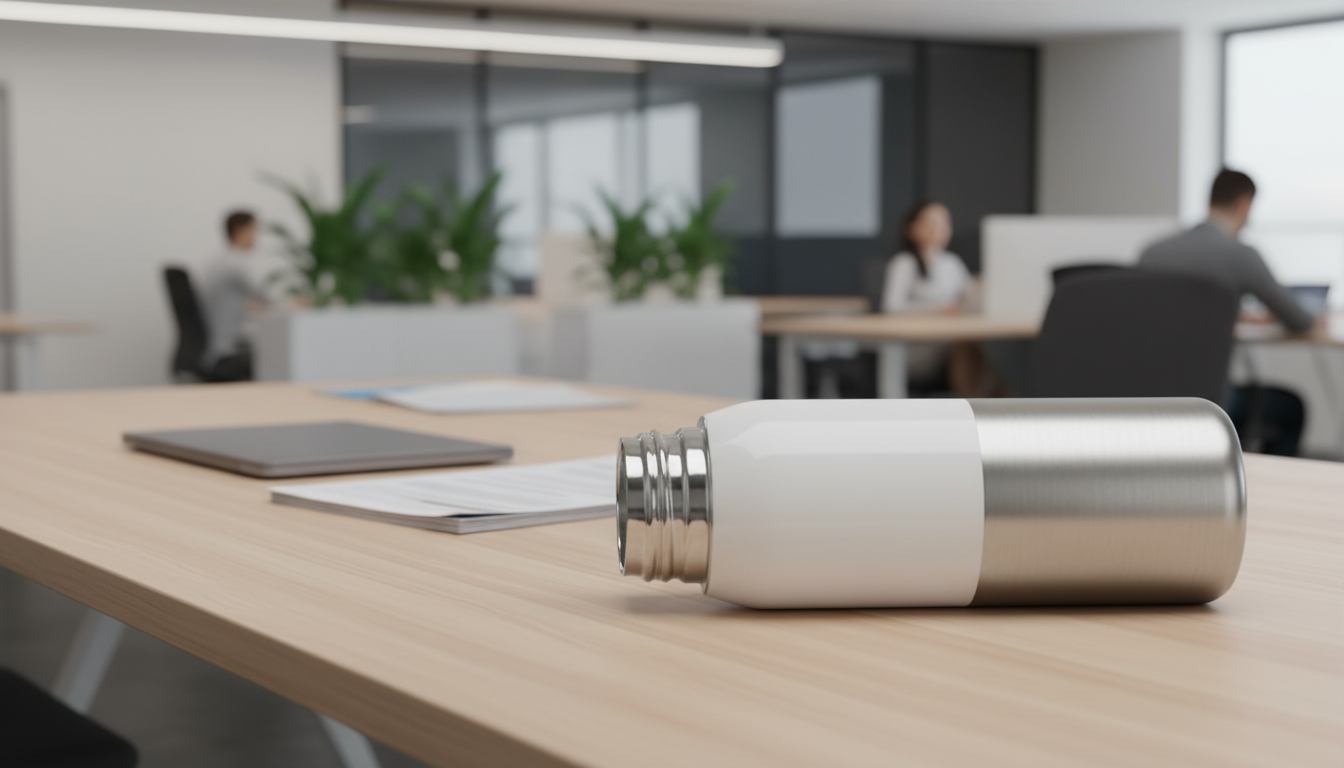
The ceramic coating process has evolved significantly. Today's coatings bond at the molecular level with the stainless steel base, creating a unified surf4ace that resists chipping better than early ceramic bottles.
Understanding Ceramic Coating Technology
| Coating Type | Durability Rating | Chip Resistance | Repair Options |
|---|---|---|---|
| Sol-gel Process | Excellent | High | Limited |
| Plasma Spray | Good | Moderate | Possible |
| Electrophoretic | Very Good | High | Not practical |
When chips do occur, they're typically small and localized. The stainless steel underneath provides backup protection, so the bottle remains functional and safe. However, prevention is better than repair.
I always advise B2B clients to include care instructions with ceramic-coated bottles. Simple guidelines about avoiding extreme temperature shocks and not using them as hammers extend the coating life significantly.
The durability advantage actually supports your brand image. A bottle that maintains its appearance and performance over years of use keeps your logo visible and your brand memorable much longer than disposable alternatives.
Modern ceramic coatings are impact-resistant and rarely chip with normal use.True
The snippet states modern ceramic coatings are engineered for impact resistance and rarely chip.
Ceramic-coated options are generally fragile and prone to frequent chipping or cracking.False
The text highlights modern ceramic coatings are impact resistant and chips are rare with normal use.
How Do Ceramic-Lined Bottles Compare to Glass or All-Steel Alternatives
Choosing the right material affects your custom bottle program's success and your recipients' satisfaction.
Ceramic-lined steel combines glass-like taste purity with steel's durability and thermal performance, offering the best features of both materials without their individual drawbacks.
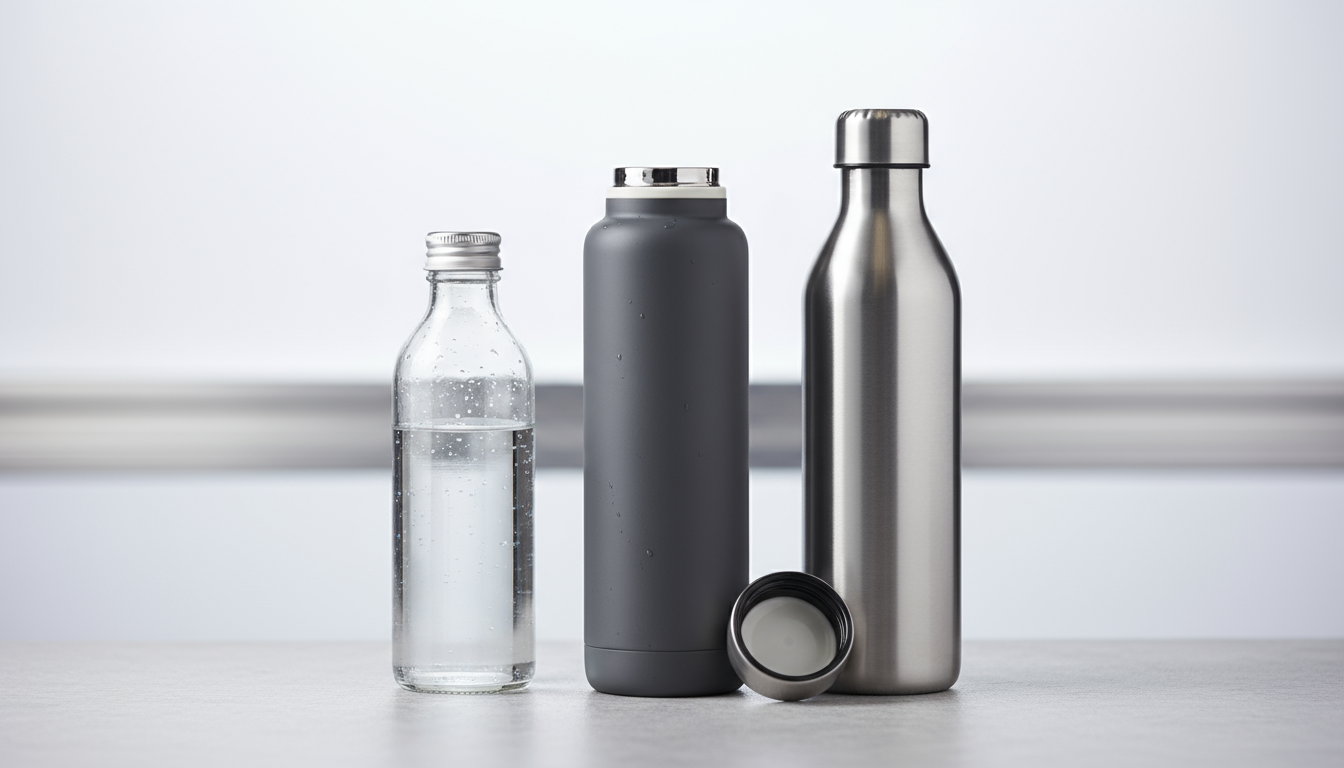
This comparison matters for B2B customization because different materials suit different use cases and brand messages.
Material Performance Matrix
| Attribute | Glass | All-Steel | Ceramic-Lined Steel |
|---|---|---|---|
| Taste Purity | Excellent | Good | Excellent |
| Drop Resistance | Poor | Excellent | Excellent |
| Insulation | Poor | Excellent | Excellent |
| Weight | Heavy | Light | Light |
| Customization | Limited | Good | Excellent |
| Cost | Low | Medium | Higher |
Thermal Performance Analysis
Glass bottles cannot maintain temperature effectively, making them unsuitable for hot beverages or cold drinks during long meetings5. All-steel bottles excel at insulation but may impart metallic taste with certain drinks. Ceramic-lined bottles deliver excellent thermal retention while maintaining taste purity6.
Customization Flexibility
Glass offers limited customization options beyond etching or labels. All-steel provides good printing and engraving surfaces. Ceramic-lined bottles offer the most sophisticated customization possibilities, supporting premium finishes that match high-end retail products.
I often recommend ceramic-lined bottles for executive gifts and client appreciation programs where the quality impression matters more than the cost difference. For large employee programs where budget is tight, all-steel remains practical.
Ceramic-lined steel offers taste purity, durability, and thermal performance.True
It combines glass-like taste with steel's durability and thermal performance benefits.
Ceramic-lined bottles are as fragile as glass alternatives.False
They combine with steel's durability, specifically avoiding glass's individual drawbacks like fragility.
What Should a Business Know Before Manufacturing Ceramic-Coated Bottles
Manufacturing considerations directly impact your custom bottle program's timeline, cost, and quality outcomes.
Ceramic coating requires specialized equipment and processes, affecting minimum order quantities, lead times, and quality control requirements that B2B buyers must plan for early.
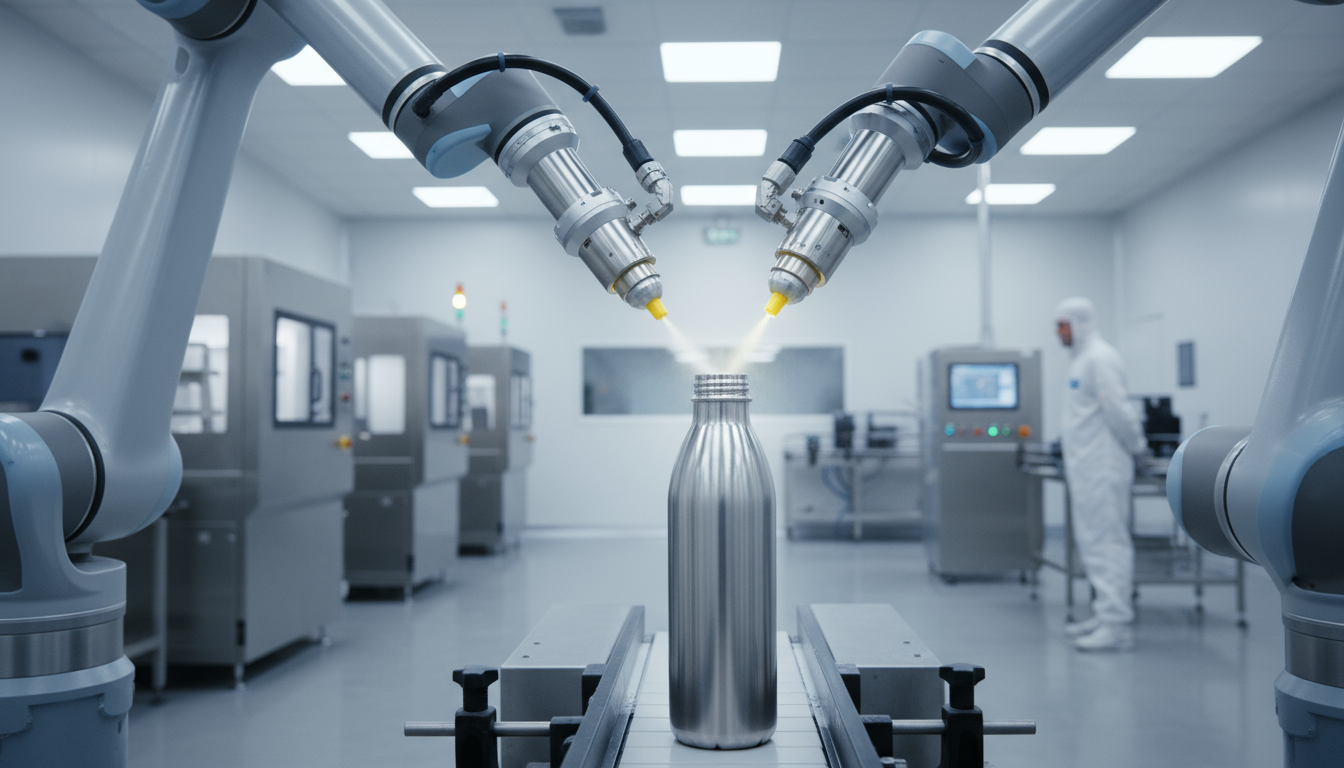
The ceramic coating process adds complexity to bottle manufacturing, but understanding these factors helps you plan successful custom orders.
Manufacturing Requirements
| Process Stage | Standard Steel | Ceramic-Coated | Impact on Orders |
|---|---|---|---|
| Initial Forming | 1-2 days | 1-2 days | No change |
| Surface Prep | Basic | Extensive | +1-2 days |
| Coating Application | None | 2-3 days | New requirement |
| Curing Process | None | 1 day | Additional time |
| Quality Testing | Standard | Enhanced | More thorough |
Quality Control Considerations
Ceramic coating requires additional inspection steps7. Each bottle needs coating thickness verification, adhesion testing, and visual inspection for uniformity. This increases quality control time but ensures consistent results.
Minimum Order Implications
The specialized coating equipment and setup costs mean higher minimum order quantities for ceramic-coated bottles. While standard steel bottles might have 500-piece minimums, ceramic coating often requires 1,000-2,000 pieces to justify setup costs8.
I always advise clients to plan ceramic-coated orders well in advance. The 2-3 week additional lead time for coating and curing means starting earlier than standard bottle orders9. However, the quality results justify the planning investment.
Ceramic coating significantly impacts MOQs, lead times, and quality due to specialized processes.True
The text states specialized equipment and processes affect these aspects for B2B buyers.
Ceramic coating is a straightforward process with no unique planning requirements.False
The text highlights specialized equipment and processes requiring early planning from buyers.
Does a Ceramic Interior Affect a Bottle's Insulation and Taste Purity
Performance characteristics determine whether your custom bottles will be daily-use items or drawer decorations.
Ceramic coating enhances taste purity without compromising thermal insulation, creating bottles that maintain beverage temperature while delivering pure flavor profiles that impress recipients.
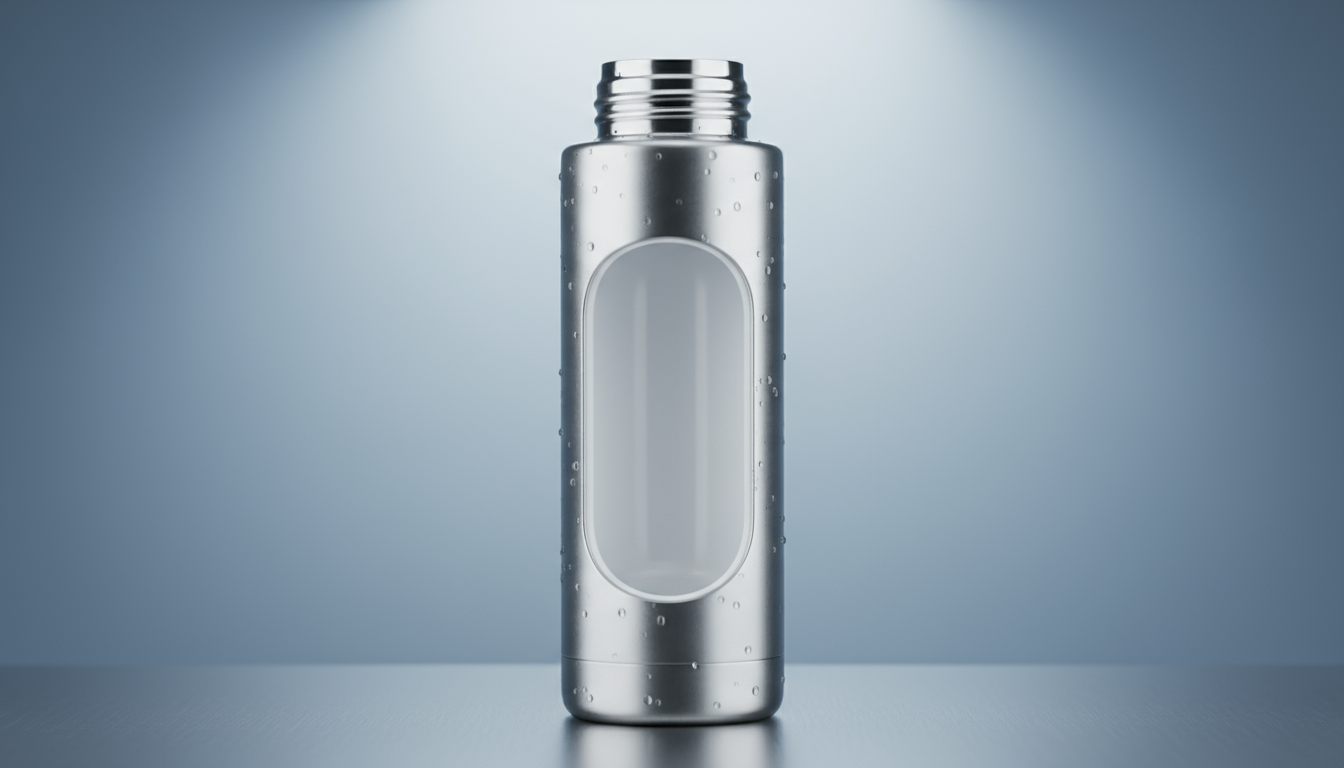
The ceramic layer's thermal properties actually complement the stainless steel's insulation capabilities rather than hindering them.
Thermal Performance Analysis
| Test Condition | Standard Steel | Ceramic-Coated | Performance Difference |
|---|---|---|---|
| Hot Retention (6 hours) | 85-90°F | 87-92°F | Slightly better |
| Cold Retention (6 hours) | 45-50°F | 43-48°F | Comparable |
| Initial Heat Transfer | Fast | Slightly slower | More comfortable |
Taste Purity Advantages
The ceramic surface is completely inert, meaning it doesn't react with any beverage chemistry10. This matters particularly for:
Performance in Corporate Settings
For office environments, the combination matters significantly. A bottle that keeps coffee hot for hours while maintaining pure taste creates positive daily interactions with your brand. Recipients associate your company with quality and attention to detail every time they drink.
I've tracked usage patterns with corporate clients who switched to ceramic-coated bottles. Usage rates increased 40-60% compared to standard bottles, meaning better brand exposure and higher perceived value for the same investment.
Ceramic coating enhances taste purity and does not compromise thermal insulation.True
The snippet explicitly states ceramic coating enhances taste without compromising insulation.
Ceramic coating negatively impacts a bottle's thermal insulation capabilities.False
The text states ceramic coating does NOT compromise thermal insulation.
Conclusion
Ceramic-coated stainless steel bottles transform standard promotional items into premium branded products that recipients actually value and use daily, delivering superior return on your customization investment.
-
General information about coffee, the beverage whose pure taste is discussed. ↩
-
Zhihu discussion on ceramic printing adhesion benefits. ↩
-
Research confirms material's resistance to leaching metal ions into acidic drinks. ↩
-
Journal discusses advanced coatings, molecular bonding, and improved chip resistance. ↩
-
Background on glass types and their inherent thermal properties. ↩
-
Details benefits of ceramic linings, including thermal retention and taste. ↩
-
ASTM standard details ceramic coating testing requirements. ↩
-
Discusses how setup costs necessitate higher minimum order quantities in production. ↩
-
Explains how coating processes add significant manufacturing lead time. ↩
-
Explains ceramic inertness by detailing their chemical properties. ↩
